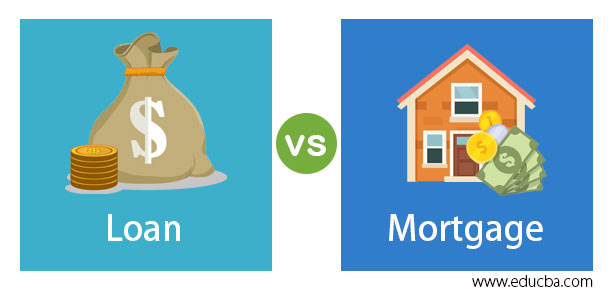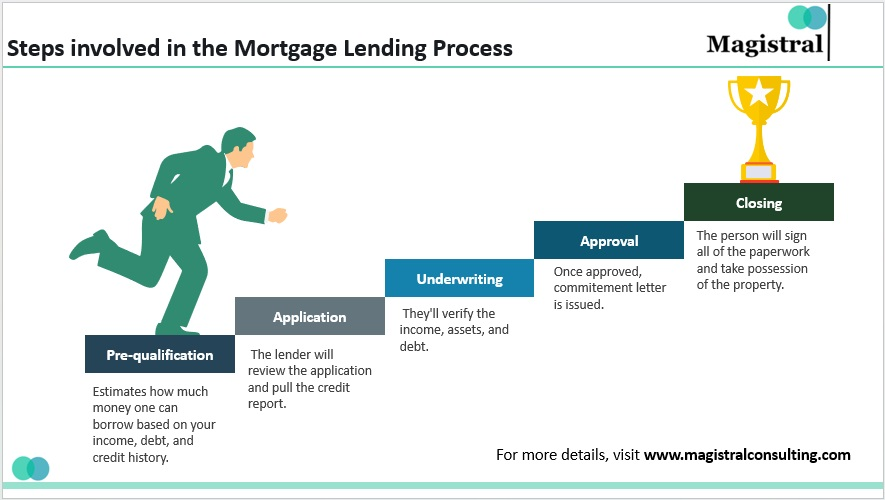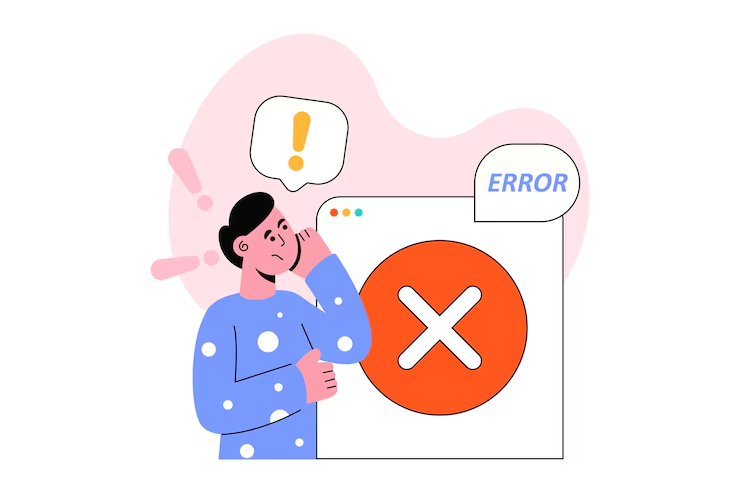
How to Compare Mortgage Loans?
Buying a home is one of the most significant financial decisions you’ll make in your life. With various mortgage loans available, each with its own terms and conditions, it can be overwhelming to decide which one is right for you. By understanding how to compare mortgage loans, you can make an informed decision that suits your financial situation.
In this guide, we’ll break down the essential elements of home loan comparison, helping you navigate the complex world of mortgage rates and terms.
Understanding Mortgage Loans
Before diving into comparisons, it’s crucial to understand what mortgage loans are. A mortgage loan is a type of loan specifically used to purchase real estate. The property serves as collateral for the loan, which means the lender can take possession of the property if the borrower fails to repay the loan.
Defining Mortgage Loans
A mortgage loan represents an agreement between the borrower and the lender. This agreement dictates that the borrower will repay the loan amount over a set period, typically through monthly payments. The specifics of this agreement can vary widely depending on the type of mortgage and the lender’s conditions.
How Mortgage Loans Work
When you secure a mortgage loan, the lender provides the funds needed to purchase the property. In return, you agree to repay the loan amount, plus interest, over a predetermined period. If you fail to make the payments, the lender has the right to foreclose on the property, selling it to recoup the loan balance.
Importance of Understanding Mortgage Loans
Understanding the mechanics of mortgage loans is vital for making informed decisions. Knowing how they work can help you assess your financial readiness and choose the best loan product for your needs. It also prepares you to engage in discussions with lenders, ensuring you ask the right questions and receive favorable terms.
Types of Mortgage Loans

There are several types of mortgage loans available, each catering to different borrower needs and financial situations. The variety ensures that most individuals can find a mortgage that aligns with their home buying goals.
Fixed-Rate Mortgages
Fixed-rate mortgages are a popular choice for many homebuyers. These loans have a fixed interest rate for the life of the loan, typically 15 or 30 years. This means your monthly payments remain consistent, providing stability and predictability, which can be advantageous for long-term financial planning.
Adjustable-Rate Mortgages (ARMs)
Adjustable-rate mortgages (ARMs) offer an initial period of lower interest rates, which can make them attractive to borrowers seeking lower initial payments. However, these rates can fluctuate based on market conditions, potentially leading to higher payments over time. Understanding the terms of rate adjustments is crucial before opting for an ARM.
Government-Backed Loans
Government-backed loans, such as FHA and VA loans, provide options for those who might face challenges qualifying for conventional loans. FHA loans, insured by the Federal Housing Administration, are popular among first-time homebuyers, while VA loans are available to veterans and often come with favorable terms like zero down payment.
Jumbo Loans
For borrowers looking to purchase higher-priced properties, jumbo loans offer a solution. These loans exceed the limits set by Fannie Mae and Freddie Mac and often come with stricter requirements, such as higher credit scores and larger down payments. Understanding these requirements is essential for those considering luxury real estate purchases.
Specialty Mortgage Products
In addition to the standard loan types, specialty mortgage products cater to unique financial situations. These can include interest-only loans, where payments only cover interest for a set period, and balloon mortgages, which require a large payment at the end of the loan term. These options can be risky, so thorough research and financial planning are essential.
Key Factors in Comparing Mortgage Loans
When comparing mortgage loans, several key factors should be considered to ensure you choose the best option for your financial situation. Understanding these elements can help you weigh the pros and cons of each loan type.
Interest Rates
Interest rates are one of the most critical aspects to compare. They determine how much you’ll pay in interest over the life of the loan. Even a slight difference in rates can save you thousands of dollars. When comparing rates, be sure to look at the annual percentage rate (APR), which includes the interest rate and any additional fees.
The Impact of Interest Rates on Loan Costs
The interest rate on a mortgage significantly impacts the total cost of the loan. A lower interest rate means lower monthly payments and reduced overall interest expenses. Conversely, a higher interest rate increases the loan’s total cost, emphasizing the importance of securing the lowest rate possible.
Understanding APR
The annual percentage rate (APR) provides a more comprehensive picture of a loan’s cost. Unlike the interest rate, the APR includes additional fees and charges, such as origination fees and closing costs. Comparing APRs rather than just interest rates gives a more accurate representation of what you’ll pay over the loan’s lifetime.
Factors Influencing Interest Rates
Several factors influence the interest rates offered by lenders, including the borrower’s credit score, loan amount, and current market conditions. Economic indicators, such as inflation and the Federal Reserve’s monetary policy, also play a role. Understanding these influences can help you predict rate trends and time your loan application strategically.
Loan Terms
The loan term is the length of time you have to repay the loan. Common terms are 15 and 30 years, but other options are available. Shorter terms typically have higher monthly payments but lower overall interest costs.
Comparing Different Loan Terms
Choosing between a 15-year and a 30-year mortgage involves balancing monthly payment affordability with total interest costs. A 15-year mortgage reduces the total interest paid but requires higher monthly payments, while a 30-year mortgage offers lower payments but increases the total interest expense.
The Benefits of Shorter Loan Terms
Shorter loan terms can lead to significant savings over time due to reduced interest payments. They also build home equity faster, providing financial security and potential opportunities for future borrowing. However, the higher monthly payments require careful budgeting and financial discipline.
Flexibility of Loan Terms
Some lenders offer flexible loan terms that allow for adjustments based on the borrower’s financial situation. This flexibility can be beneficial if your income fluctuates or if you anticipate changes in your financial circumstances. Understanding these options can provide peace of mind and adaptability in your mortgage plan.
Fees and Closing Costs
Lenders charge various fees, such as origination fees, appraisal fees, and closing costs. These can add up to thousands of dollars, so it’s essential to compare these costs when evaluating mortgage loans.
Common Fees in Mortgage Loans
Mortgage loans come with a range of fees that can significantly impact the total cost of borrowing. Origination fees cover the lender’s processing costs, while appraisal fees assess the property’s value. Understanding these fees and their purpose can help you negotiate better terms and avoid unexpected expenses.
Negotiating Fees and Costs
Many fees associated with mortgage loans are negotiable. By understanding each fee’s purpose and the lender’s flexibility, you can negotiate reduced costs or even have certain fees waived. This negotiation process can lead to substantial savings, making it a critical aspect of loan comparison.
Estimating Closing Costs
Closing costs encompass various expenses incurred during the mortgage process, such as title insurance and attorney fees. These costs can vary significantly between lenders, emphasizing the importance of obtaining detailed estimates and comparing them. Accurate estimates ensure you’re financially prepared for the final stages of the home buying process.
Down Payment Requirements

Different loans have different down payment requirements. Some conventional loans require as little as 3% down, while others might require 20% or more. FHA loans typically require a 3.5% down payment, while VA loans might not require any down payment at all.
The Role of Down Payments in Mortgage Approval
The down payment is a crucial factor in mortgage approval. A larger down payment reduces the lender’s risk, often leading to better loan terms and lower interest rates. It also decreases the loan amount, resulting in lower monthly payments, making it an essential consideration in loan comparisons.
Strategies for Saving for a Down Payment
Saving for a down payment requires strategic planning and disciplined saving habits. Setting a budget, reducing unnecessary expenses, and exploring down payment assistance programs can help accumulate the necessary funds. These strategies ensure you’re financially prepared when it’s time to purchase your home.
Balancing Down Payment with Other Financial Goals
While a substantial down payment offers benefits, it’s essential to balance this goal with other financial priorities. Maintaining an emergency fund and investing in retirement accounts are critical for long-term financial health. Evaluating your overall financial plan ensures you’re not overextending yourself in pursuit of homeownership.
Private Mortgage Insurance (PMI)
If your down payment is less than 20%, you may need to pay for PMI. This insurance protects the lender if you default on your loan. It’s important to factor in PMI costs when comparing loans, as they can significantly impact your monthly payments.
Understanding Private Mortgage Insurance
Private Mortgage Insurance (PMI) is a requirement for borrowers with less than a 20% down payment. It protects the lender from potential losses if the borrower defaults. While PMI increases monthly costs, it allows borrowers to purchase a home sooner without waiting to save a full 20% down payment.
Calculating the Cost of PMI
The cost of PMI varies based on factors such as loan amount, loan-to-value ratio, and credit score. Typically, PMI premiums range from 0.3% to 1.5% of the original loan amount per year. Understanding these calculations helps you assess the total cost of PMI over time and its impact on your budget.
Removing PMI
PMI can be removed once you reach 20% equity in your home, either through paying down the loan balance or an increase in property value. Knowing the process for removing PMI and monitoring your equity can save you money by eliminating these additional monthly costs. Discussing options with your lender ensures you’re aware of the necessary steps.
Steps to Compare Mortgage Loans

Successfully comparing mortgage loans involves a systematic approach, ensuring you evaluate all relevant factors to make the best decision.
Step 1: Assess Your Financial Situation
Before comparing loans, evaluate your financial situation, including your credit score, income, and debt. This will help you determine what type of loan you qualify for and what terms you can expect.
Evaluating Your Credit Score
Your credit score is a critical factor in mortgage qualification. Lenders use it to assess your creditworthiness, influencing the interest rates and terms offered. Understanding your credit score and taking steps to improve it before applying can lead to better loan offers.
Analyzing Income and Debt Ratios
Lenders evaluate your income and debt-to-income ratio (DTI) to determine loan eligibility. A lower DTI indicates financial stability and a higher likelihood of loan approval. Calculating your DTI and adjusting your budget to reduce debt can enhance your borrowing prospects.
Setting a Budget for Home Buying
Establishing a budget for home buying involves more than assessing monthly mortgage payments. Consider additional costs such as property taxes, insurance, maintenance, and utilities. A comprehensive budget ensures you’re financially prepared for the responsibilities of homeownership.
Step 2: Gather Loan Estimates
Request loan estimates from multiple lenders. These estimates will provide detailed information about interest rates, fees, and other costs associated with each loan.
Requesting Loan Estimates
To compare loans effectively, request estimates from various lenders, including banks, credit unions, and mortgage brokers. These estimates provide a breakdown of costs, interest rates, and loan terms, allowing you to make informed comparisons.
Understanding the Loan Estimate Document
The loan estimate document outlines key details of the proposed loan, including interest rates, monthly payments, and closing costs. Familiarizing yourself with this document ensures you understand each aspect of the loan offer, facilitating accurate comparisons.
Comparing Estimates from Different Lenders
When comparing estimates, focus on differences in interest rates, fees, and loan terms. A side-by-side comparison highlights variations and helps identify the most cost-effective option. This process ensures you’re choosing the loan that best aligns with your financial goals.
Step 3: Analyze Loan Estimates
Carefully review the loan estimates, paying attention to the interest rates, APR, loan terms, and fees. Create a comparison chart to visualize the differences between each loan option.
Creating a Comparison Chart
Organizing loan estimates in a comparison chart helps visualize differences in interest rates, fees, and terms. This approach simplifies the comparison process, making it easier to identify the most favorable loan options.
Assessing the Long-Term Costs
When analyzing loan estimates, consider the long-term costs associated with each option. Factors such as total interest paid over the loan term and potential PMI costs should be evaluated. This comprehensive analysis ensures you’re considering the full financial impact of each loan.
Identifying the Best Value
While interest rates and monthly payments are crucial, identifying the best value involves assessing overall affordability. Consider how each loan fits within your budget and aligns with your financial objectives. The best value option balances cost, stability, and flexibility, meeting your long-term needs.
Step 4: Consider Future Financial Goals
Think about your long-term financial goals. If you plan to stay in your home for many years, a fixed-rate mortgage might be best. If you plan to move in a few years, an adjustable-rate mortgage with lower initial rates might be more suitable.
Aligning Loan Choice with Financial Objectives
Your choice of mortgage should align with your broader financial goals. Consider how the loan fits into your plans for saving, investing, and future expenditures. Aligning these elements ensures your mortgage supports rather than hinders your financial growth.
Evaluating Career and Lifestyle Changes
Consider potential changes in your career or lifestyle that could impact your ability to manage mortgage payments. Job stability, family planning, and relocation possibilities should influence your loan choice. Anticipating these factors ensures your mortgage remains manageable under various circumstances.
Planning for Long-Term Financial Health
A mortgage is a long-term financial commitment, and its terms should support your financial health over time. Consider how the loan will affect your ability to save, invest, and meet other financial obligations. A well-chosen mortgage contributes to overall financial stability and growth.
Step 5: Use Online Tools
Use online mortgage calculators and comparison tools to input different loan scenarios and see how changes in interest rates, down payments, and loan terms affect your monthly payments and total loan cost.
Exploring Mortgage Calculators
Online mortgage calculators provide a convenient way to explore various loan scenarios. By inputting different loan amounts, interest rates, and terms, you can assess potential monthly payments and total loan costs. This exploration helps you understand the financial implications of each loan option.
Utilizing Comparison Tools
Mortgage comparison tools allow you to evaluate multiple loan offers side by side. These tools often include features that highlight differences in interest rates, fees, and terms, simplifying the decision-making process. Utilizing these resources ensures you’re making data-driven choices.
Staying Informed with Online Resources
Beyond calculators and comparison tools, online resources offer valuable information on mortgage trends, market conditions, and financial strategies. Staying informed through reputable sources empowers you to make educated decisions and stay ahead of changes in the housing market.
Common Mistakes to Avoid

Avoiding common mistakes in the mortgage comparison process can save you time, money, and stress. Being aware of these pitfalls ensures a smoother home buying experience.
Not Shopping Around
Don’t settle for the first loan offer you receive. Shopping around can help you find better rates and terms. Comparing offers from multiple lenders ensures you’re securing the most favorable loan for your financial situation.
The Importance of Exploring Multiple Lenders
Exploring offers from various lenders increases your chances of finding a competitive loan. Each lender may offer different rates, terms, and incentives, so broadening your search can lead to better options. This exploration is crucial for optimizing your borrowing experience.
How to Effectively Shop for Loans
Effective loan shopping involves more than collecting offers; it requires analyzing each lender’s reputation, customer service, and loan features. Engaging with different institutions and asking detailed questions ensures you’re choosing a lender that meets your needs.
Overcoming Common Barriers to Shopping Around
Barriers to shopping around, such as time constraints and information overload, can hinder your loan search. Address these challenges by setting aside dedicated time for research and using comparison tools to streamline the process. Overcoming these obstacles ensures you’re making informed decisions.
Ignoring the APR
Focusing solely on the interest rate without considering the APR can lead to unexpected costs. The APR provides a more comprehensive view of the loan’s cost, including fees and other charges. Ignoring this crucial metric can result in financial surprises.
Understanding the Full Cost of a Loan
The APR encompasses more than just the interest rate; it includes fees and costs associated with obtaining the loan. Understanding this full cost is essential for accurate comparisons, ensuring you’re not overlooking significant expenses.
The Risks of Overlooking APR
Neglecting to consider the APR can result in higher-than-anticipated loan costs. This oversight can strain your budget and affect your financial stability. Prioritizing APR analysis ensures you’re making cost-effective decisions.
How to Analyze APR Effectively
Analyzing APR involves comparing it across different loan offers, looking for discrepancies between interest rates and total costs. This analysis helps you identify the most transparent and affordable loan options, protecting your financial interests.
Overlooking Loan Fees
Failing to account for fees and closing costs can result in paying more than you anticipated. These costs can add up quickly, impacting your overall budget. Being aware of and planning for these expenses is crucial for financial preparedness.
Identifying Hidden Fees
Mortgage loans may include hidden fees that aren’t immediately apparent. Identifying these fees early in the process ensures you’re fully aware of the loan’s true cost. Transparency with lenders and thorough document review can prevent unexpected charges.
The Impact of Fees on Loan Affordability
Loan fees directly affect affordability by increasing the overall cost of borrowing. Understanding each fee’s purpose and negotiating where possible can reduce these costs, enhancing your loan’s value.
Strategies for Managing Loan Fees
Managing loan fees involves negotiating with lenders, seeking fee waivers, and budgeting for necessary expenses. These strategies help minimize costs and ensure your loan remains within your financial means.
Not Considering Loan Types
Different loan types offer various benefits. Ensure you understand the options available to you. Each loan type caters to specific financial situations, and overlooking these options can limit your choices.
Exploring Alternative Loan Options
Beyond traditional loans, exploring alternative options like government-backed or specialty loans can provide unique benefits. Understanding these alternatives ensures you’re making informed decisions based on your financial situation.
The Benefits of Diverse Loan Options
Diverse loan options offer flexibility in terms of rates, down payment requirements, and qualification criteria. Leveraging these benefits can lead to more favorable terms and align with your home buying goals.
How to Choose the Right Loan Type
Choosing the right loan type involves assessing your financial situation, future plans, and risk tolerance. This assessment ensures your loan choice supports your long-term objectives and provides financial peace of mind.
Forgetting About PMI
If applicable, PMI can add to your monthly costs, so factor it into your comparisons. Ignoring PMI can lead to budgetary challenges and affect your overall affordability.
The Financial Implications of PMI
PMI increases monthly payments, impacting your budget and overall loan cost. Understanding these implications ensures you’re prepared for the additional expense and can accommodate it within your financial plan.
Strategies for Managing PMI Costs
Managing PMI involves strategies such as increasing your down payment or monitoring home equity to eliminate PMI sooner. These approaches reduce the financial burden and enhance your loan’s affordability.
Avoiding PMI Pitfalls
Avoiding PMI pitfalls involves understanding its requirements, costs, and removal process. Being informed ensures you’re making strategic decisions that minimize costs and maximize financial benefits.
Conclusion

Comparing mortgage loans can seem daunting, but understanding the key factors and following a systematic approach can help you make an informed decision. By evaluating interest rates, loan terms, fees, and other essential elements, you can find a mortgage loan that fits your financial needs and long-term goals. Remember, the right mortgage can save you money and provide financial stability for years to come.
The Importance of a Systematic Approach
A systematic approach to comparing mortgage loans ensures you’re considering all relevant factors, from interest rates to long-term financial goals. This thorough evaluation process leads to informed decisions and optimal loan selection.
Long-Term Benefits of the Right Mortgage
Choosing the right mortgage impacts your financial well-being for years. The right loan offers savings, stability, and alignment with your goals, enhancing your overall financial health and homeownership experience.
Empowering Your Home Buying Journey
Empowered with knowledge and a strategic approach, you’re positioned to navigate the mortgage landscape confidently. This empowerment leads to successful home buying, financial security, and the realization of your homeownership dreams.




